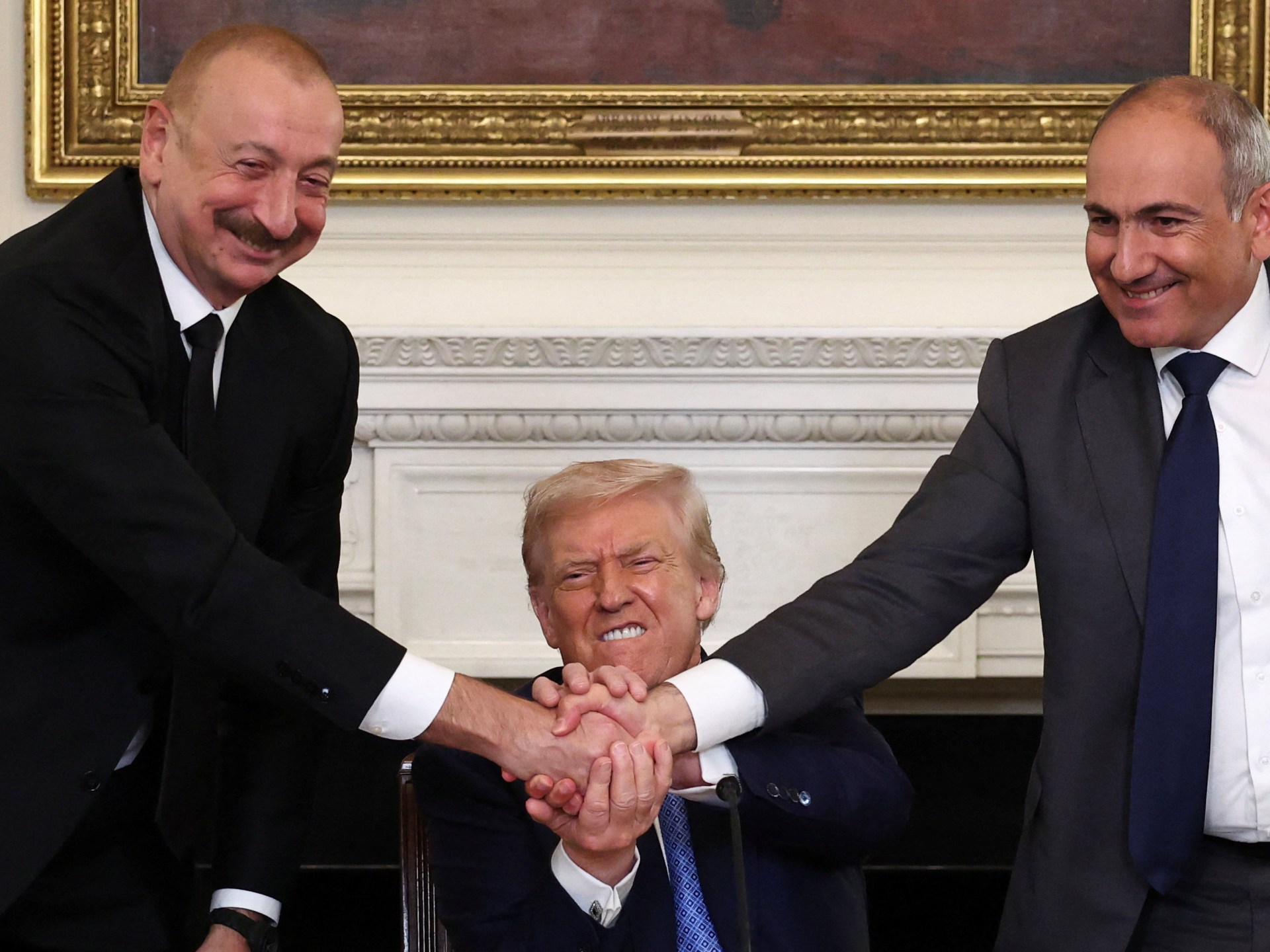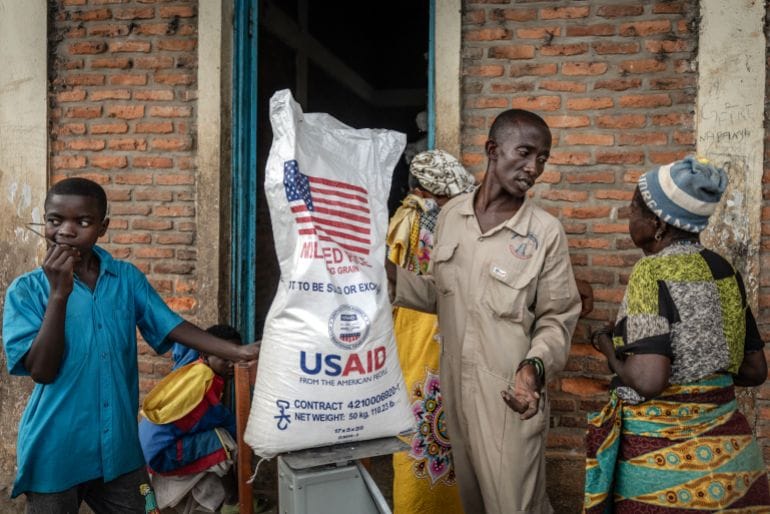Does a Trump-brokered deal squeeze Russia, Iran out of the South Caucasus? | News
Azerbaijan’s President Ilham Aliyev, his late father and predecessor Heydar Aliyev and some of their closest political allies hail from Nakhchivan.
The name of this tiny, mountainous and underdeveloped Azeri area sandwiched between Armenia, Iran and Turkiye sounds unfamiliar to those outside the strategic South Caucasus region.
But Nakhchivan’s name and geopolitical significance resurfaced after United States President Donald Trump hosted a White House summit between Azeri and Armenian leaders on Friday.
Azerbaijan’s Aliyev and the Armenian Prime Minister Nikol Pashinyan signed a preliminary peace deal to end the decades-long conflict over Nagorno-Karabakh.
In the early 1990s, ethnic Armenians in the Nagorno-Karabakh region broke away from oil-rich Azerbaijan after a war that killed thousands and displaced hundreds of thousands.
Moscow brokered a truce in 1994, maintaining two military bases in resource-poor Armenia, supplying it with cheap energy while selling arms to Azerbaijan.
Even though the conflict did not involve Nakhchivan, it cut off the Zangezur Corridor, a 40km (25-mile) logistical umbilical cord to Azeri mainland that consists of a derelict road and parallel rusty rail tracks.
Air travel and hours-long, bumpy transit through Iran remained the only way to reach the exclave, whose authorities ruled it like a personal fiefdom, with laws and ways of life often contradicting those of the mainland.
After winning the 2020 war over Nagorno-Karabakh and restoring control over it three years later, Baku has been eager to revive the corridor, demanding its exterritoriality and even pondering the use of military force.
‘A new reality in the region’
The reasons go far beyond restoring access to Aliyev’s ancestral land. The corridor could become a mammoth transport hub between Turkiye, Azerbaijan and Central Asia.
It may increase the flow of Central Asian hydrocarbons to Turkiye and further to Europe, boost the regional economy – and upend Russia’s two centuries of domination in the region that also includes Georgia.
Armenia was reluctant to allow Azeri access to the corridor, fearing that the emboldened Turkish-Azeri tandem may jeopardise its security.
But Trump cut through the Gordian knot on Friday, and his role “essentially, cements a new reality in the region”, according to Emil Mustafayev, the Baku-based chief editor of the Minval Politika online magazine.
“This is a serious shift in the security architecture and transport logistics of the South Caucasus,” he told Al Jazeera.
While in the White House, Aliyev and Pashinyan lavished Trump with praise and nominated him for a Nobel Peace Prize.
“What cracked me up is that [they] didn’t lose their way about how one has to communicate in Washington,” Andrey Kazantsev, an expert on the region, told Al Jazeera.
They also flattered Trump by naming the corridor the Trump Route for International Peace and Prosperity (TRIPP) and leasing it to Washington for up to 99 years with exclusive development rights.
What looks like one of Trump’s favourite real estate deals actually heralds a tectonic shift.
“Trump’s administration has indeed been quick to find its way towards the long-due geopolitical pivot,” Kazantsev said.
China, which has been promoting its Belt and Road Initiative in Asia and Eastern Europe, may remain “neutral” to it, and Russia, which has two military bases in Armenia, may “ignore it, at least, publicly”, he said. “But for Iran, it’s a real blow.”
‘A boost of Washington’s clout’
To guard the TRIPP, Washington may use a private military company – and eventually build a military base that nominally safeguards Armenia but actually keeps an eye on Iran, said Ukrainian political analyst Aleksey Kushch.
“It means more potential pressure on Iran and a boost of Washington’s clout in the resource-rich Caspian region where US oil companies made sizeable investments” in the 1990s, he said.
And Moscow is also about to lose a lot.
“No matter how paradoxical it sounds, it’s Moscow that has been and still is a decisive factor in the peace settlement between Armenia and Azerbaijan and in solving the latter’s problem of accessing Nakhchivan,” said Alisher Ilkhamov, head of Central Asia Due Diligence, a think tank in London.
“One of the main motives for rapprochement of both sides is their push to get rid of Moscow’s influence, of the peacekeeper’s role it has imposed on them,” he told Al Jazeera.
The new deal “only highlights how fictitious Moscow’s role as peacekeeper and middleman in peace settlement in the South Caucasus is”, Ilkhamov said.
However, the deal is not yet set in stone, and the Trump-hosted summit “sparked premature optimism”, said Kevork Oskanian of the University of Exeter, in the United Kingdom.
This optimism “should be tempered by realism and historical precedent [as] many peace processes have failed despite promising starts”, he told Al Jazeera.
A deal not yet done
Baku, whose annual $5bn defence spending exceeds Yerevan’s entire debt-hobbled state budget, affirmed Armenia’s territorial integrity but did not withdraw from some 200sq km (77sq miles) of its land.
The TRIPP’s concept avoids Baku’s demand for the corridor’s extraterritoriality, balancing sovereignty with strategic access, Oskanian said.
But there are also questions as to whether Washington’s initiatives are “a principled intervention or opportunistic geopolitics”, he added.
Even without direct confrontation, Moscow and Tehran could try to undermine the deal.
“Their grudging acquiescence is essential – but far from guaranteed,” Oskanian said.
Iran threatened on Saturday that the TRIPP “will not become a gateway for Trump’s mercenaries – it will become their graveyard”.
Armenia is a democracy “polarised” over the loss of Nagorno-Karabakh and Pashinyan’s conflict with the Armenian Apostolic Church, Oskanian said.
To finalise the peace deal, Pashinyan would need to hold a referendum amending Armenia’s constitution that mentions the “reunification” with Nagorno-Karabakh – and win the 2026 parliamentary vote.
Therefore, the success of Trump’s deal depends on many intricacies of South Caucasus politics – and the West “must engage with nuance – not just geopolitics”, Oskanian concluded.



